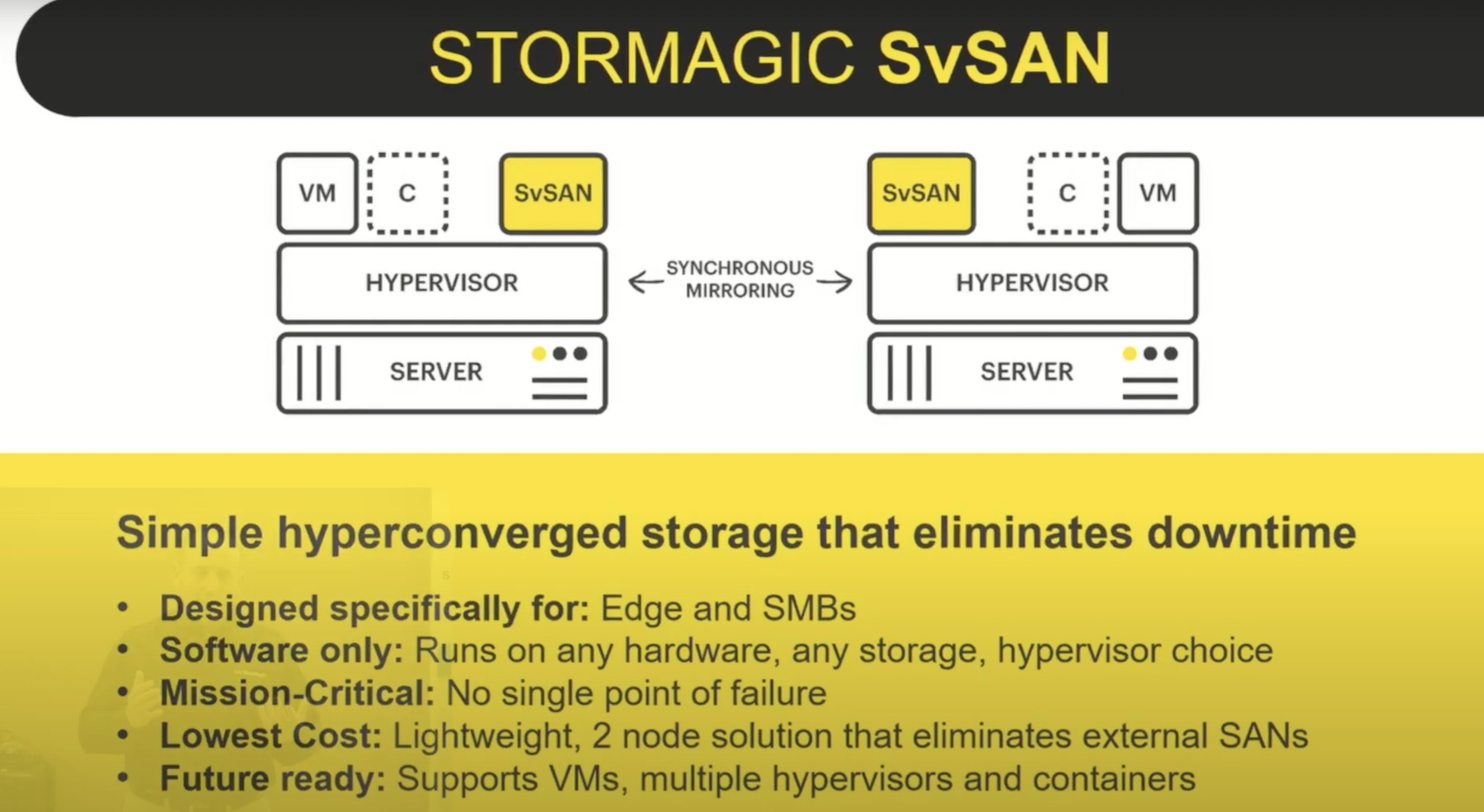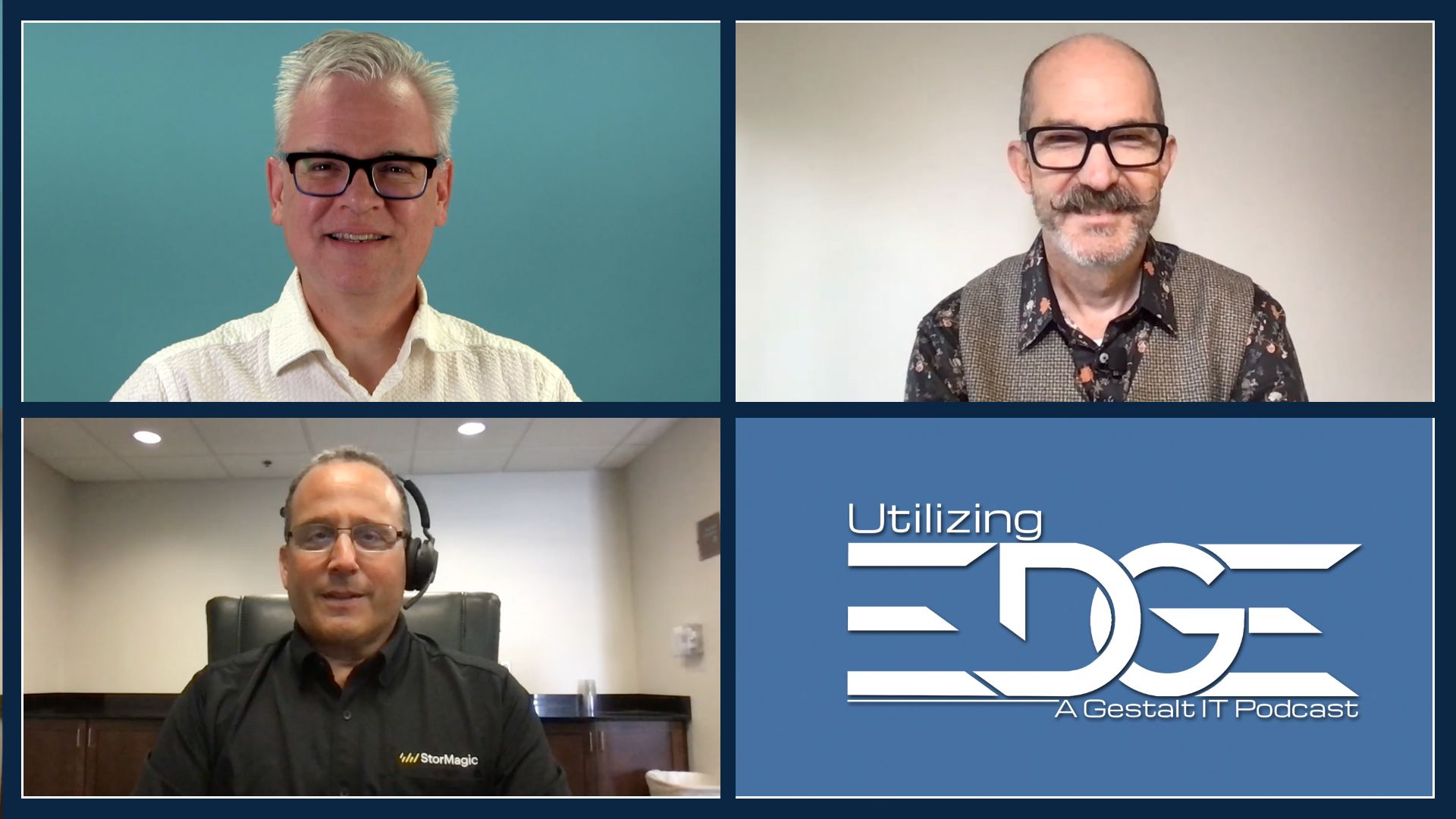In some ways, StorMagic has an old school approach to software-defined storage. Instead of a hyperconverged infrastructure approach that utilizes some of the same principals, but ultimately locks you into very specific hardware, StorMagic is strictly software only. Their goal is to provide software abstracted storage functions that allow organizations to run on their hardware of choice. They see their market at the edge of the enterprise. These would be remote locations for large organization where installing and deploying specialized hardware isn’t cost effective or physically feasible.
SvSAN
These edge locations generally don’t have extensive storage needs that require a costly SAN, perhaps only 2-4TB. Using their software only approach, StorMagic is proposing to offer shared storage with high availability with SvSAN. This is done by taking the storage within servers on-site and make it available as a virtual SAN.
An interesting differentiator for StorMagic is the ability to create this virtual SAN with just two servers. These are unified by a witness devices, that determines which server will take over control of data in a disputed situation to prevent corruption. If these witness devices needed to be installed at each site, it would defeat the cost savings of using two servers versus three in a given deployment. Luckily, the witness device can be centrally located. The cost savings versus a more typical three server layout might not be tremendous at any given site, but collectively over dozens or hundreds of sites, it would really add up.
Aside from cost, this provides a reasonable increase in fault tolerance and availability. Even if a single SAN might be cost feasible at a given site, SvSAN allows for more availability. A failure in any one server automatically causes a default to the other. All data is synchronously mirrored between the two servers to prepare for just such a failure, and served up as a shared iSCSI volume.
While data is actively mirrored between the servers, it does not require additional overhead for reads and writes. Reads specifically can be isolated to one server, which means that there’s no latency while data moves across the cluster. Writes can also come in at either side. However, to ensure the mirroring, writes are not completed until data is committed to storage on both sides.
Storage for the Edge
Now a few years ago, this might have been a tempting solution for retail or industrial applications, where sites are either too numerous or inaccessible to really warrant a SAN. But StorMagic is increasingly seeing their solution as vital for the surge of Internet of Things devices that are moving compute onto the edge. In these instances, a wide variety of industries suddenly have a need for high availability storage on the edge. It’s a logical extension for the architecture of their SvSAN solution.
While StorMagic is strictly a software only solution, they’ve also partnered with Cisco to provide a form of bespoke hyperconvergence for customers. Seeing the hardware that they’ve been certified on, it’s hard not to be struck by the versatility of SvSAN. Customers can get it on everything from entry level UCS E-Series servers with just a couple of drives, all the way through the dense S-Series, with up to sixty drives. If Cisco isn’t your hardware of choice, SvSAN will also run on anything from the VMware compatibility list.
StorMagic seems well poised to become a versatile and reliable part of the enterprise edge. As organizations follows the trend to move compute closer to data, solutions like SvSAN just make sense. They aren’t trying to replace a SAN where it makes sense, but they’ve found a way to offer highly available and resilient storage for locations that might not need high volume storage. As IoT further infiltrates the enterprise, StorMagic’s SvSAN makes a lot of sense.
Check out their presentation from Tech Field Day for more demos and technical deep dives.





[…] Sans SAN with StorMagic […]